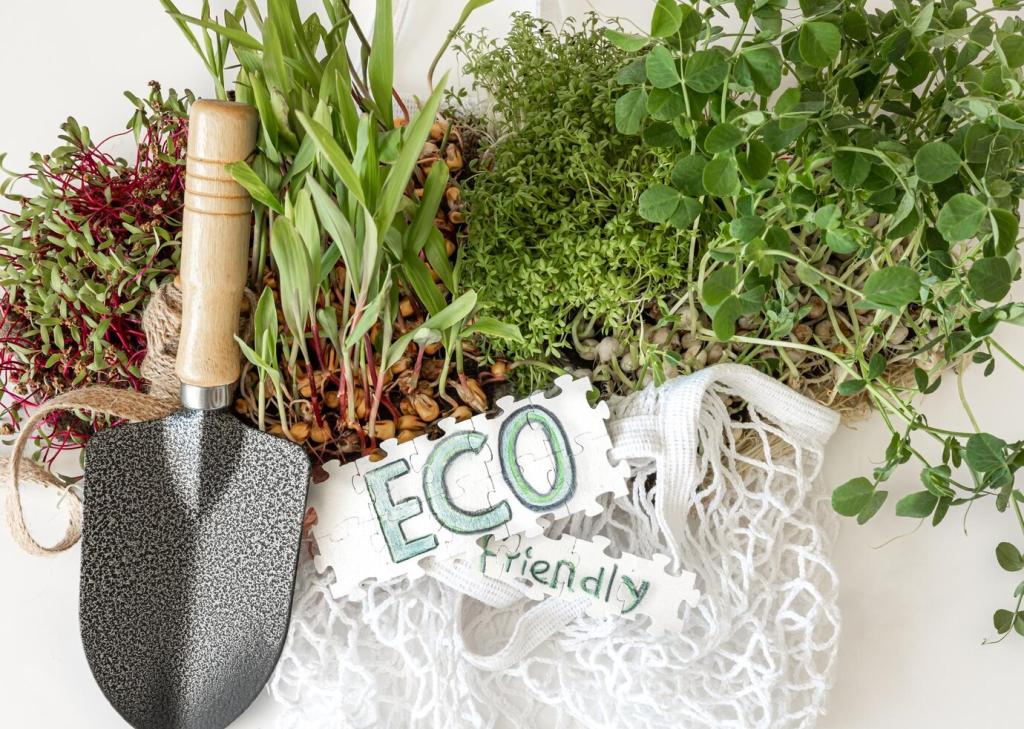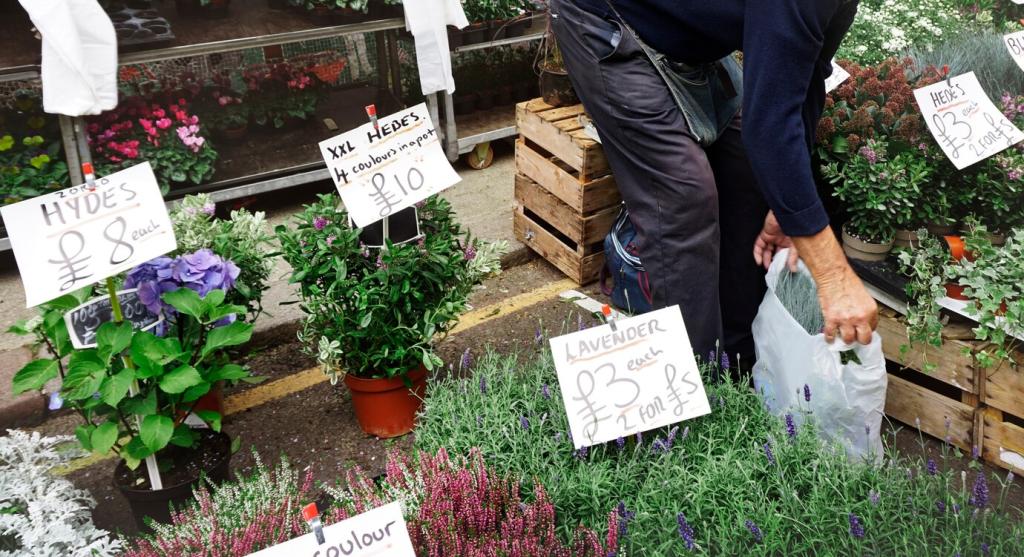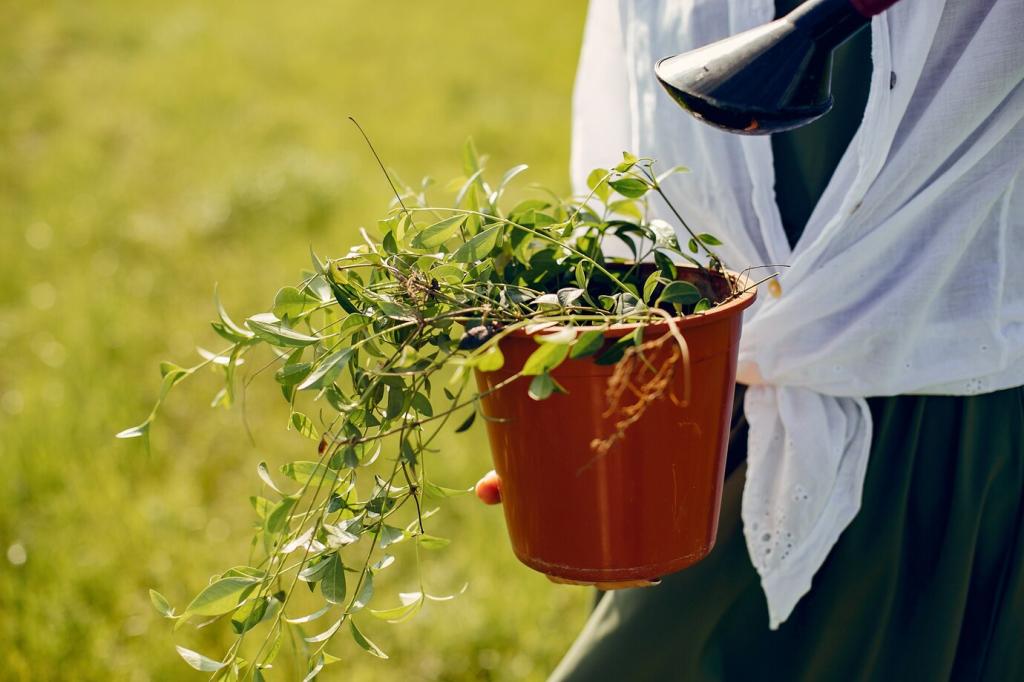
Eco-friendly Lawn Care Practices: A Greener Yard Starts Here
Chosen theme: Eco-friendly Lawn Care Practices. Welcome to a fresh, down-to-earth guide where beauty, biodiversity, and low-impact maintenance come together. Let’s make your lawn healthier, quieter, and kinder to the planet—one practical habit at a time.
Start With Soil: The Foundation of Eco-friendly Lawn Care
A quick soil test reveals pH, nutrients, and organic matter, guiding eco-friendly choices that prevent guesswork and waste. Share your results in the comments, and subscribe for a free, printable soil improvement checklist tailored to sustainable lawns.

Water Wisely, Grow Deep Roots
Deep, Infrequent Watering Builds Resilience
Water early in the morning, and aim for deeper, less frequent sessions that total about one inch per week. This trains roots to chase moisture downward. Share your sprinkler timing strategy, and subscribe for our seasonal watering reminder emails.
Rain Barrels and Smart Controllers Save Resources
Rain barrels capture free water, while weather-based controllers skip unnecessary cycles automatically. Together they reduce costs and runoff. Tell us your setup and how much you’ve saved; we’ll highlight inspiring reader systems in our newsletter.
Choose Drought-Tolerant Grasses and Microclover
Fine fescues, buffalo grass, and microclover sip less water and stay greener longer. My neighbor Maya overseeded with microclover and noticed cooler soil and fewer brown patches. Comment if you’ve tried blends and what climate you’re growing in.
Mow for Health, Not Just Looks
Raise the Blade to Three to Four Inches
Taller grass shades soil, discourages weeds, and reduces watering needs. Set your mower higher and watch stress fade. If you’ve tested different heights, share before-and-after photos and tell us which settings worked best in your region.
Reel and Electric Mowers Cut Emissions and Noise
Reel mowers are whisper-quiet and surprisingly satisfying. Electric mowers offer push-button convenience with fewer fumes. When we switched, our weekend sounded like birds, not engines. Drop a comment with your favorite eco mower model and battery runtime tips.
Sharpen Blades and Grasscycle the Clippings
Sharp blades make clean cuts that heal faster and reduce disease pressure. Leave clippings to decompose as free fertilizer. How often do you sharpen, and do you notice greener results after grasscycling? Join the discussion and subscribe for maintenance reminders.

Plant a Bee Lawn Patch
Mix low-growing flowers like self-heal and white clover into turf for nectar without sacrificing play space. Our readers report more bumblebees within weeks. Share your flower mixes, and we’ll publish a crowd-sourced seed list for different climates.
Leave the Edges a Little Wild
A soft border with native grasses, sedges, and pollinator perennials frames the lawn and shelters allies. Butterflies perched along my fence after I stopped trimming every edge. Post a photo of your wild edge to inspire others.
Mulch Fall Leaves to Feed and Shelter
Shred leaves with a mower and let them filter into turf as free organic matter. Overwintering insects appreciate the habitat too. How many bags have you saved from the curb by mulching? Share your yearly tally and tips.


Weeds and Pests the Eco-friendly Way
Identify the issue, set a tolerance level, and intervene only when it matters. Most lawn “problems” are temporary. Tell us your IPM success story, and subscribe to get our printable decision tree for common eco-friendly lawn concerns.
Weeds and Pests the Eco-friendly Way
A dandelion fork, a weeding knife, and a little patience go a long way. Accept some diversity; a few blooms feed pollinators. What’s your favorite tool, and how do you pace weekly maintenance without chemicals?
Seasonal Checklist for a Sustainable Yard
Kick off with a soil test, spot-aerate compacted zones, and overseed bare patches with drought-tolerant mixes. Tell us your germination wins, and subscribe for our month-by-month calendar customized to eco-friendly lawn care practices.


Seasonal Checklist for a Sustainable Yard
Raise mowing height, water deeply, and sharpen blades. Portable shade for young trees protects roots and turf. What heatwave strategies have worked for you? Share them so others can keep lawns healthy without overwatering.
